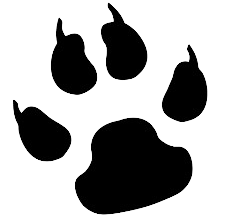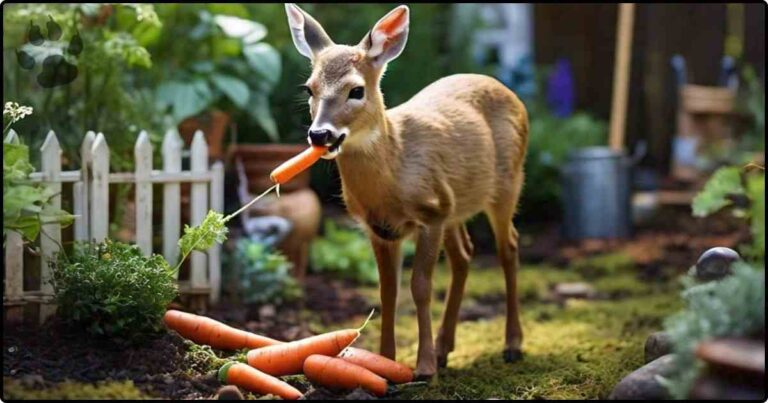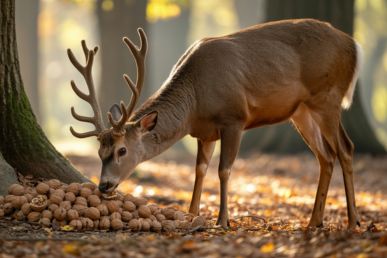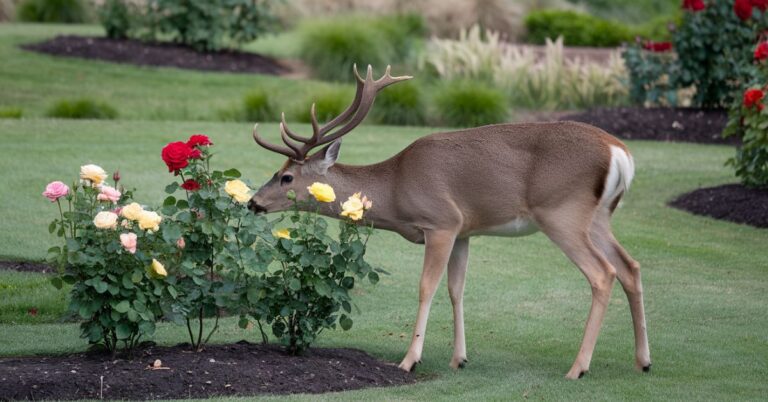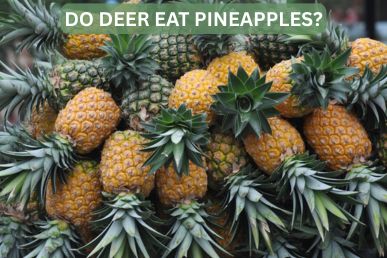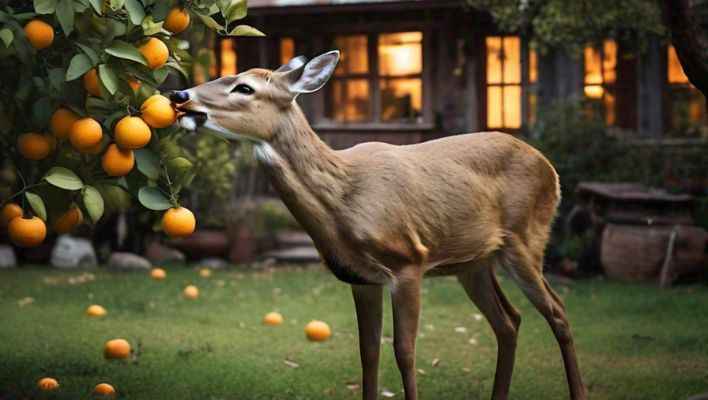Do Deer Eat Turnips? Shocking Reasons They Might Avoid Them
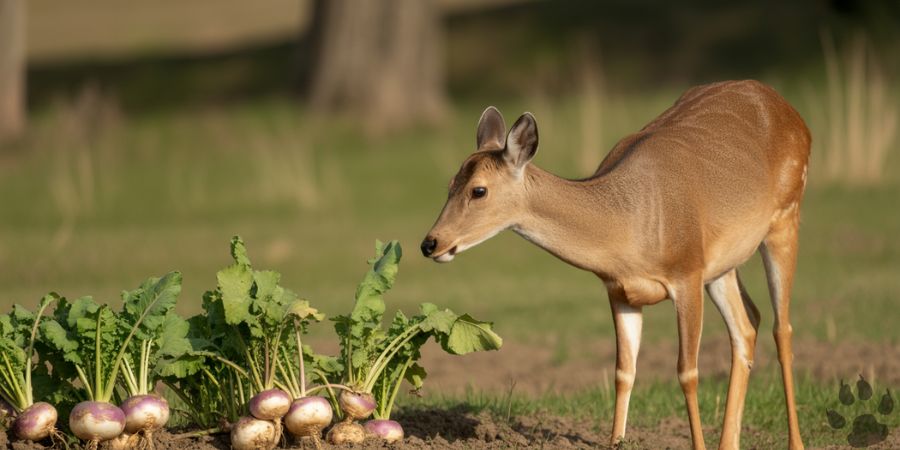
You may have often heard that deer don’t eat turnips, but have you ever tried to find out why deer don’t eat turnips? Although some people say that deer don’t eat turnips, the truth is that deer eat turnips along with the leafy tops. Just like with other garden crops such as tomatoes, there’s often confusion about what deer will or won’t eat.
In this article, I will tell you when deer eat turnips, when to grow turnips for deer, and what the reasons could be if deer are not eating turnips.
When do deer eat turnips?
It is true that deer will eat turnips as they grow, but you should not expect deer to pay much attention to them at the beginning of the season. In areas where deer have plenty of other food choices, turnips usually aren’t their first pick.
Deer start eating more turnips when food sources become scarce, especially from mid-October to early November. This makes turnips a great mid-to-late-season food source, attracting deer when you may need it most.
4 reasons why deer don’t eat turnips
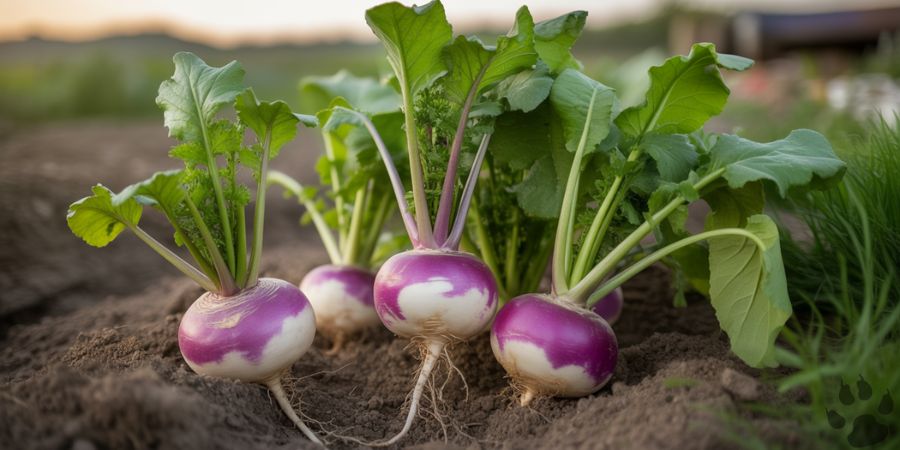
Reason No. 1: Because it’s new
Deer are taught by their mothers and family units what food is good for them and what is not. If they are denied food, they will not eat it unless they are in danger of starving to death. So when they are in such a situation, they can eat anything.
If you want deer to eat turnips, a good idea is to start with a small plot in an area where deer often come to feed so that the deer can find it easily and know that it is a good meal. A tenth of an acre is a great idea to start a small plot.
If you see that deer are liking them and eating them, you can plant more plants in the future, but if you plant too many at the beginning and the deer don’t even touch them, it’s a waste of your hard work and space.
Reason No. 2: Because you planted it too thick
One reason why deer don’t eat turnips could be that you are using too many seeds in your small plot. This is a very bad thing because it causes the plant to grow poorly, and overuse of anything can lead to unpleasant results.
The plants may compete with each other for sunlight, water, and nutrients, which can result in smaller, weaker turnips that deer may not find appealing. When they are close to each other, it is obvious that they will also compete with each other for space.
Therefore, using the right amount of seeds is very important. Many experts recommend using approximately 3 to 10 pounds of seeds per acre as sufficient. But some people think that their plot is too big, and because of this misconception, they throw a lot of seeds in their small plot.
So, if you want to get the best results, follow the recommendations of experts. The first thing is that you should know the exact measurements of your planting area.
If you don’t know this, it is better to use fewer seeds than more. Once you know how many acres your planting area is, it will be easier for you to understand how many seeds to use here.
Reason No. 3: Because the rotten bulbs were everywhere
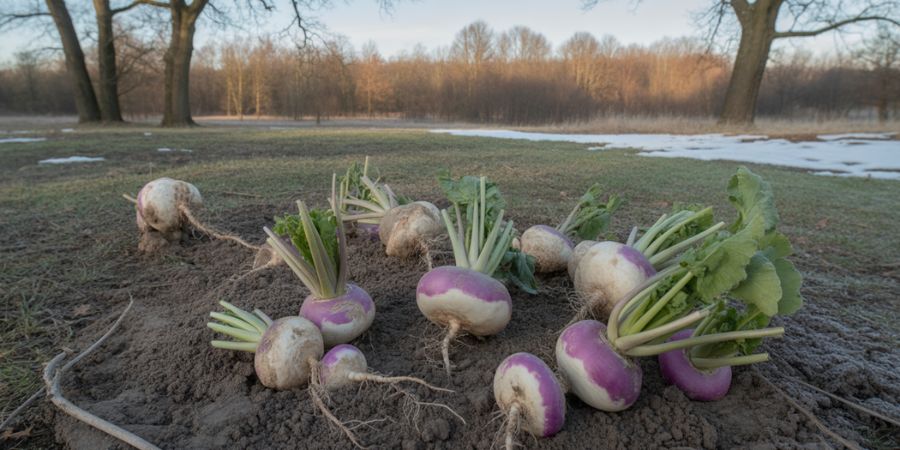
Many people are alarmed when they see a bunch of leftover turnip bulbs or rotten turnip bulbs in their food plots. But let me tell you, it’s not a bad thing.
Some people have a very healthy deer population near their homes, but still, when they walk through their fields in March, they find plenty of turnips scattered on the ground.
This makes them think that deer are ignoring turnips, although the fact is that turnips last longer, and deer are often attracted to them in the winter when they have nothing else to eat.
It’s something to think about when you don’t find any bulbs left in the spring—that usually means your food plot didn’t carry your herd through the winter.
In those situations, you have to either ramp up planting the following year or make some tough herd management decisions. The key is balance. Don’t panic over uneaten turnips; panic if there are none left.
Reason No. 4: If you do not fertilize
If you don’t fertilize your turnips, deer will be much less likely to eat them because without fertilizer, the plants don’t grow well, and they don’t taste good.
Plants need the right nutrients to be healthy and tasty, just as a human needs a good diet to stay healthy. It’s much better to plant a small area (like half an acre) of well-prepared, properly fertilized turnips than a large area (like 7 acres) of poorly grown ones.
To make sure your turnips grow well and attract deer, you should:
- Do a soil test first (to know what nutrients your soil needs).
- Use the right amount of seed and prepare the soil properly.
- And most importantly, fertilize the plants.
Therefore, if you are making any of the above mistakes, your mindset will be that deer do not eat turnips.
How Do Deer Use Turnips During the Late Season?
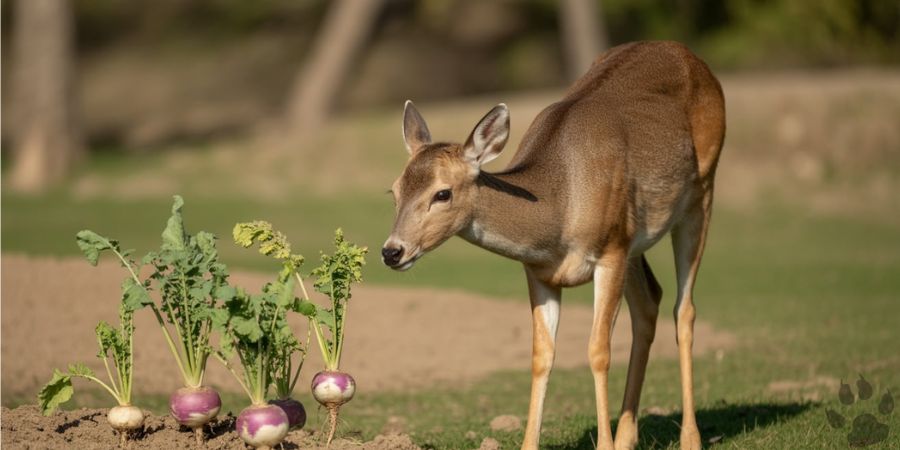
According to a Facebook user, Gary Hawthorn, in central & south Arkansas, turnips are a reliable late-season food source for deer.
Deer often start eating leafy greens in mid-December. And as winter progresses, they turn their attention to turnip roots. By early March, deer usually have completely eaten the turnip roots.
These crops are not usually planted with the intention of hunting deer, but using these crops is a great way to keep deer close during the cold months and can also be helpful for hunting.
Other fall crops, like pumpkins, can also be part of a deer’s seasonal diet and attract them during cooler months. When the hunting season is active, deer focus on eating crops like rye, wheat, and oats, and they save root vegetables to survive the cold winter months.
When to plant turnips for deer?
Turnip is a vegetable that grows much faster than other vegetables, and according to some research, turnip crops mature within 75 to 90 days. They’re suitable for both northern and southern climates, making them a flexible option for food plots.
- If you live in the northern regions, you can plant turnips in late summer, giving them plenty of time to grow before the cold weather sets in.
- In southern areas, you can plant them in early fall, as the growing season lasts a bit longer.
How to plant turnips for deer?
What type of turnips do deer like?
Of the many varieties of turnips, purple top turnips are the most favored by deer. This type of turnip belongs to the Brassica family and is rich in nutrients, protein, and high sugar content; easily digestible; and resistant to light frost, which is why deer prefer it.
In addition, the purple tops mature within about 50 to 80 days. This variety is a great choice for food plots, especially for those looking to attract and feed deer during the fall and winter seasons.
Do deer eat turnip leaves and turnip tops?
Yes, deer enjoy eating the leafy green tops as well as the underground taproots (the actual turnips). During the winter, a deer’s first prey is usually vegetables like carrots, and then, when other food sources become scarce in winter, deer also start to find turnip roots attractive.
Will deer eat turnips after a freeze?
Yes, deer will eat turnips even after they are frozen, usually when the turnip leaves die back in the late season. At that time, turnips became very valuable to deer. As long as the deer has the strength to dig through the frozen ground, it will continue to dig and eat the roots (tubers).
Deer use this same behavior with other underground vegetables like potatoes, especially during the harsh winter months when food is limited.
Conclusion:
Deer do eat turnips, especially during the colder months when other food sources are limited, but factors like unfamiliarity, poor planting practices, overcrowding, and lack of fertilization can keep them away.
To make turnips an effective food plot option, proper timing, soil preparation, and patience are essential. With the right approach, turnips can become a reliable and nutritious part of a deer’s winter diet.
